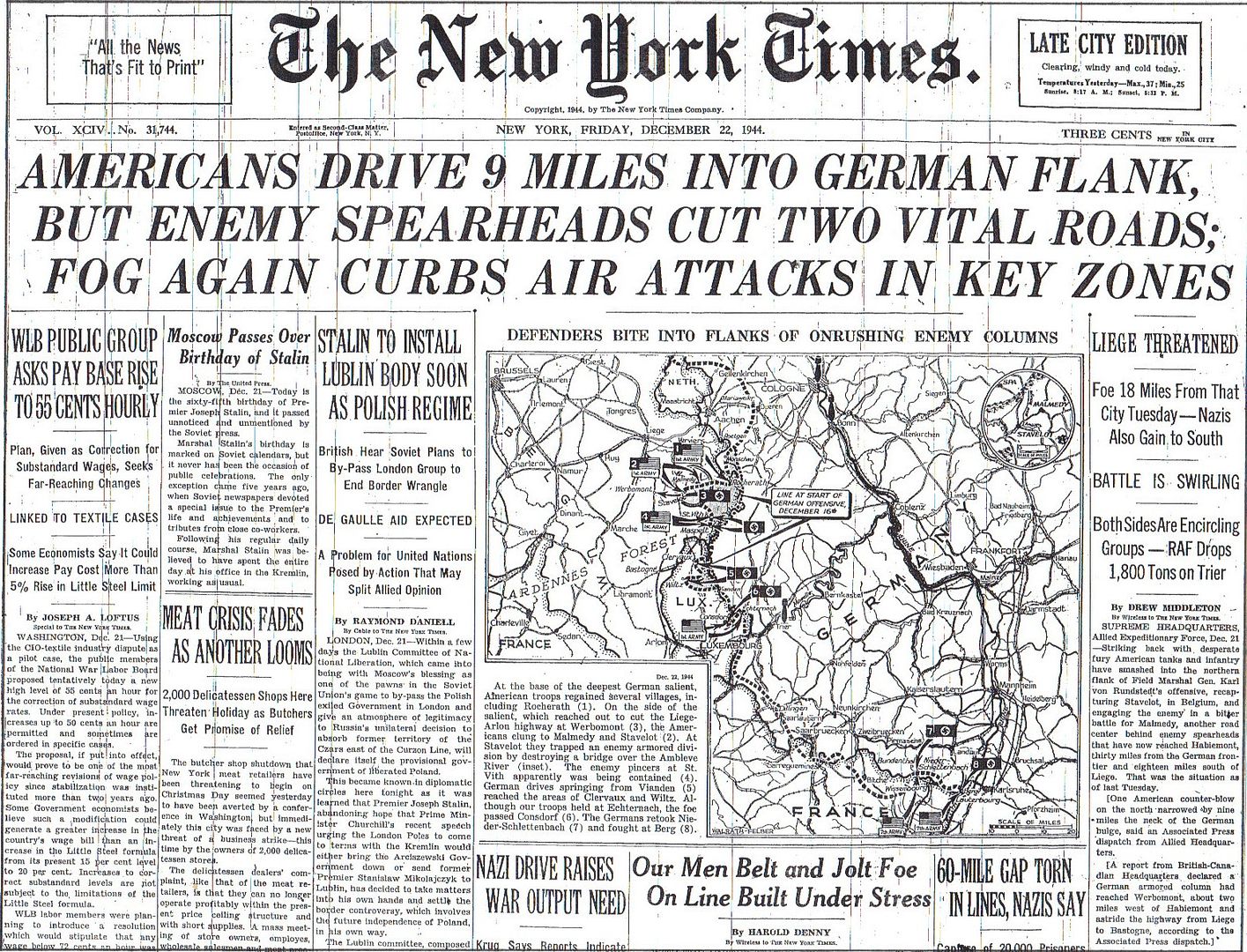
Posted on 12/22/2014 4:27:21 AM PST by Homer_J_Simpson


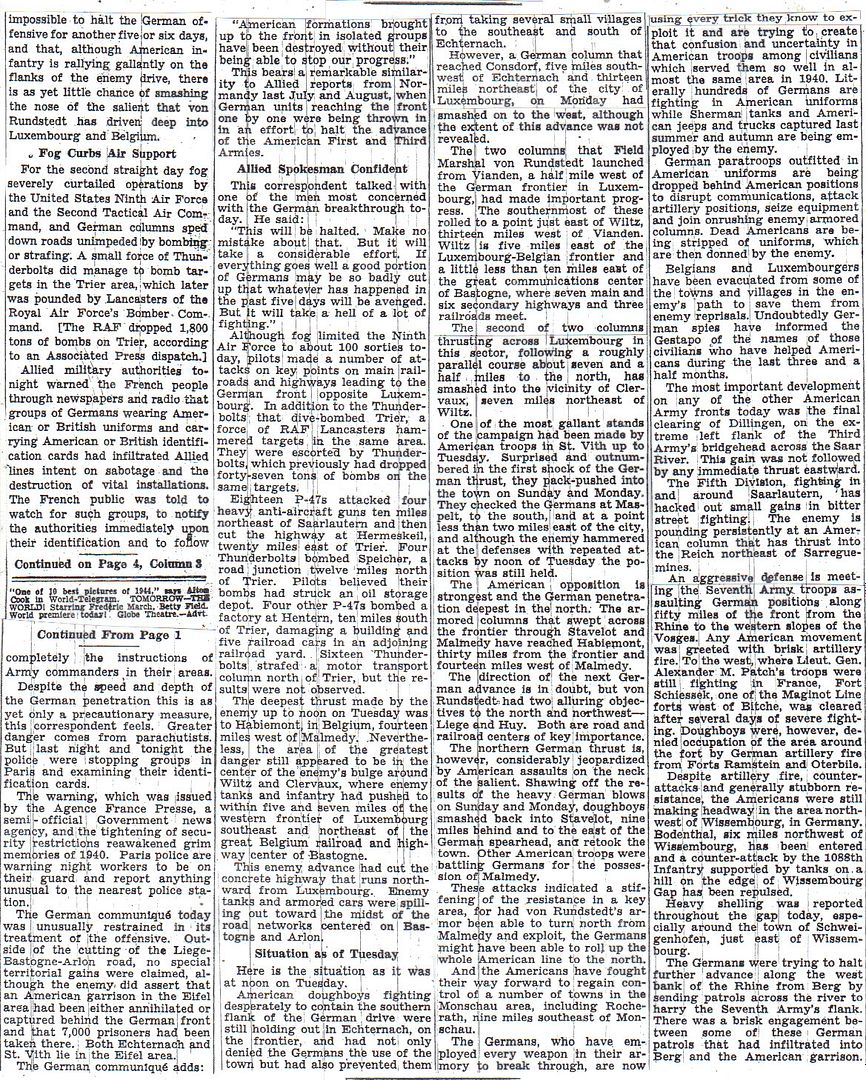

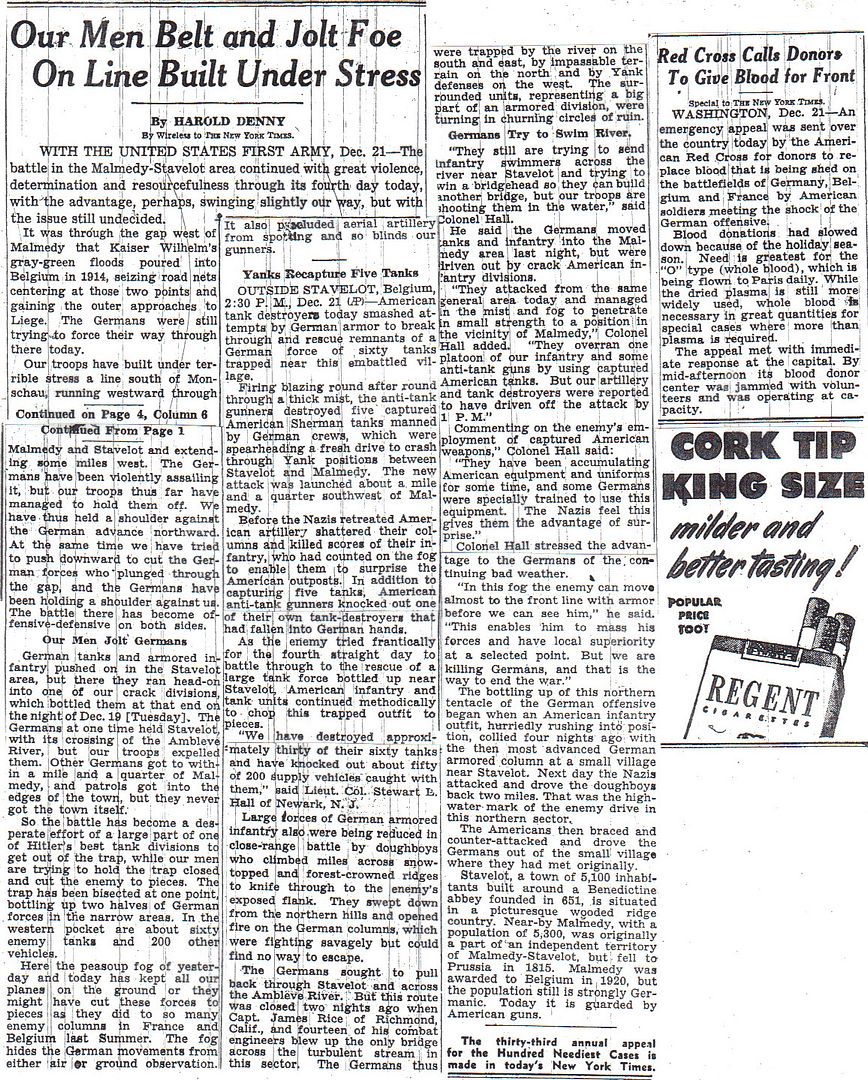
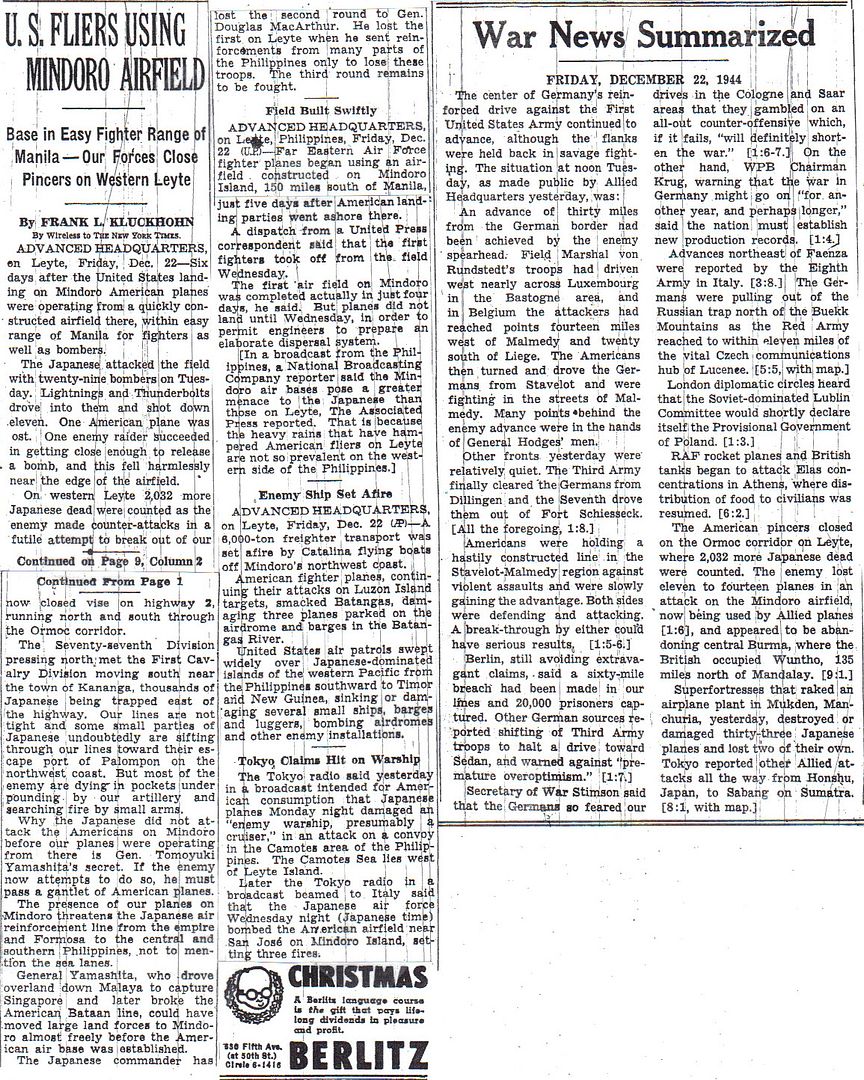
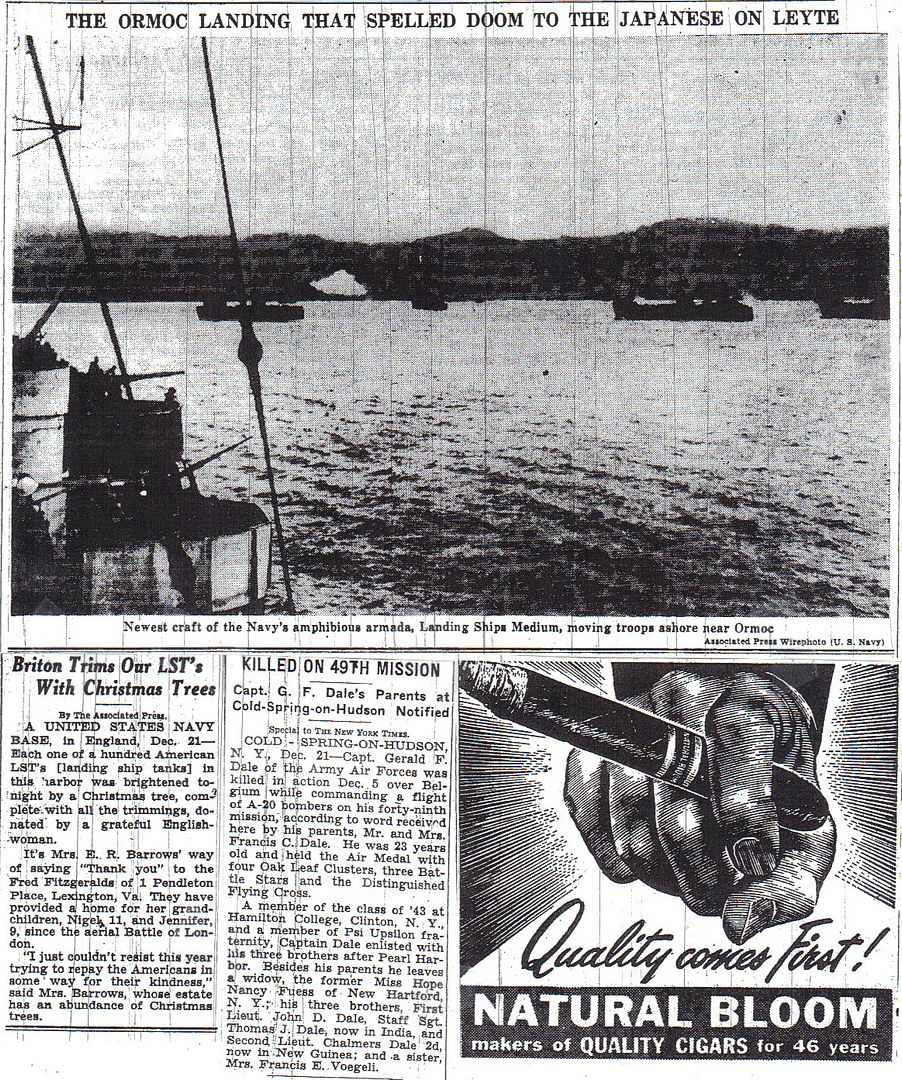
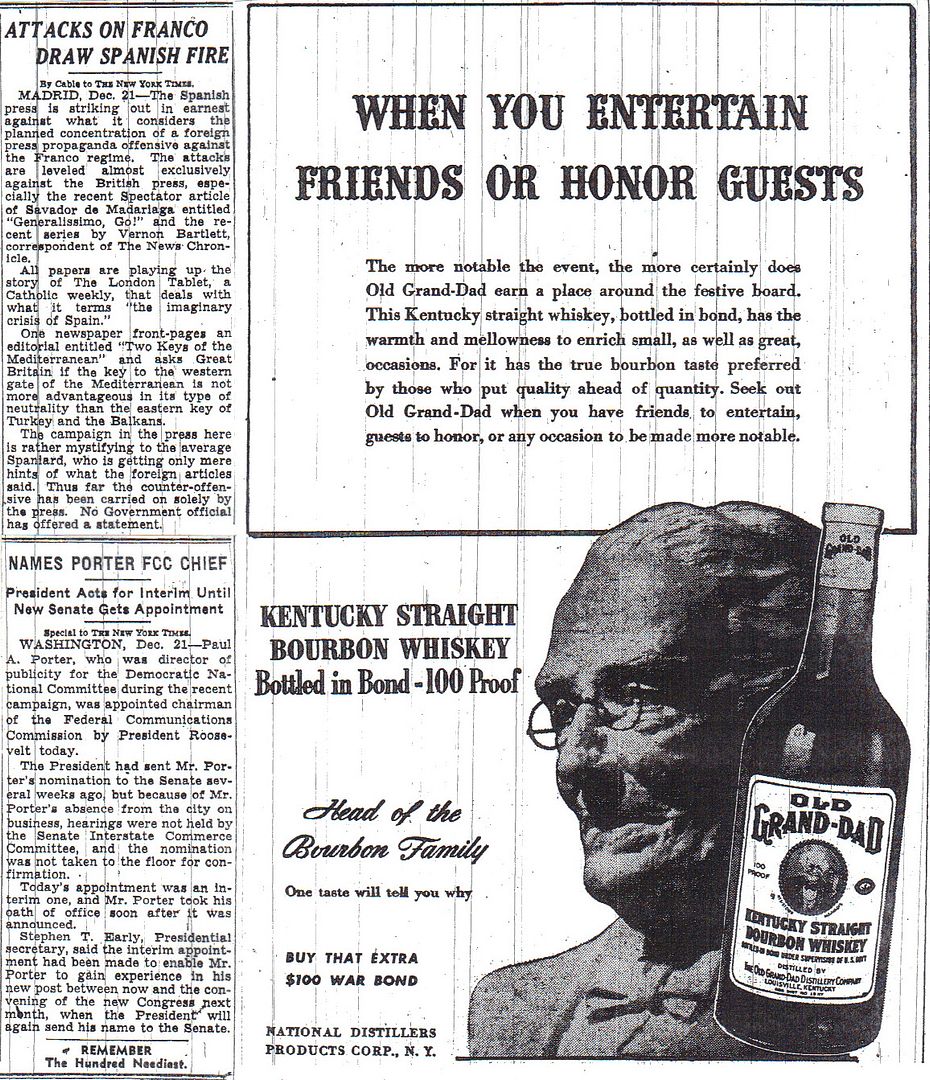
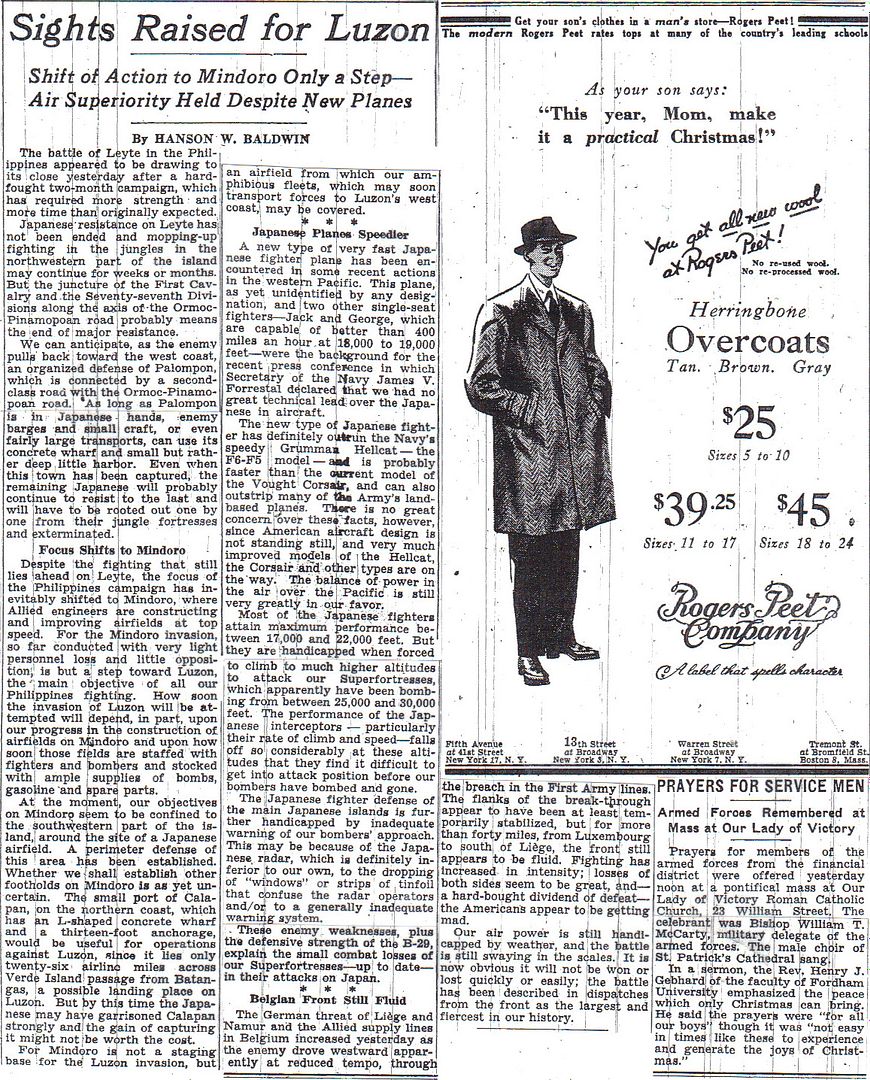

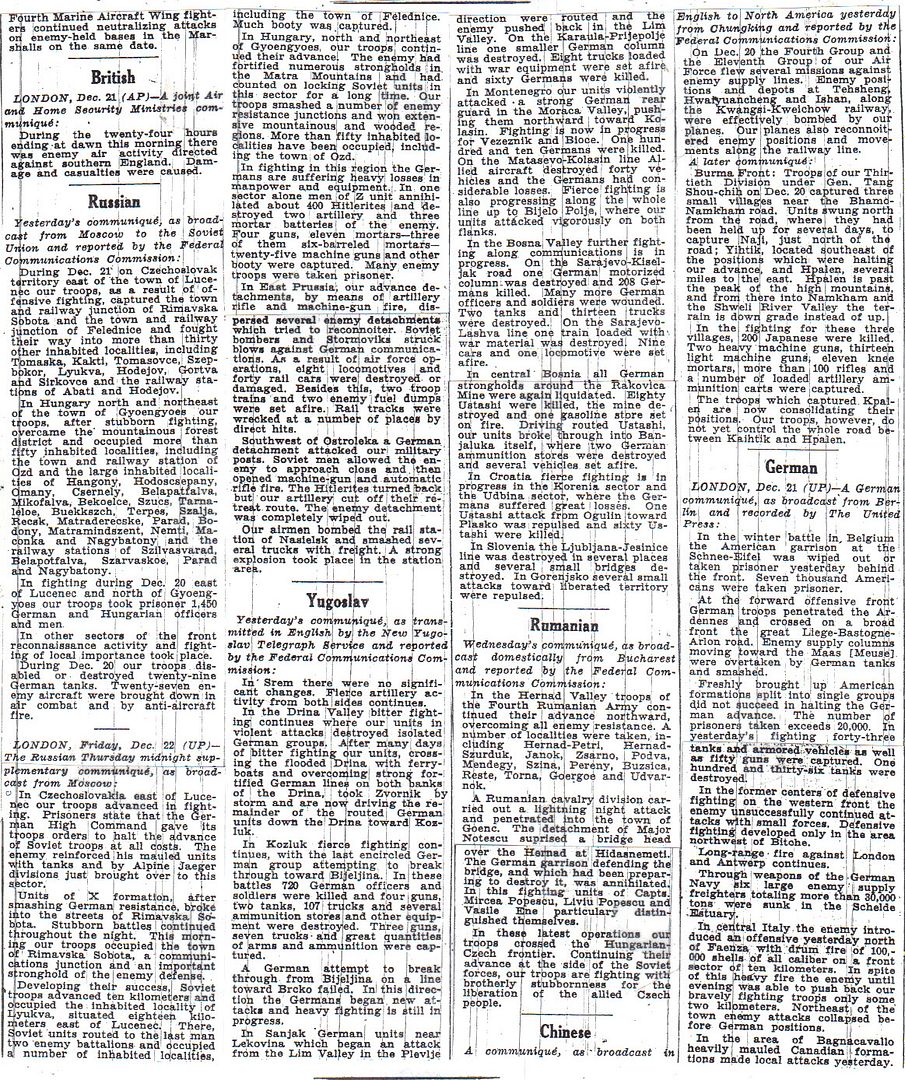
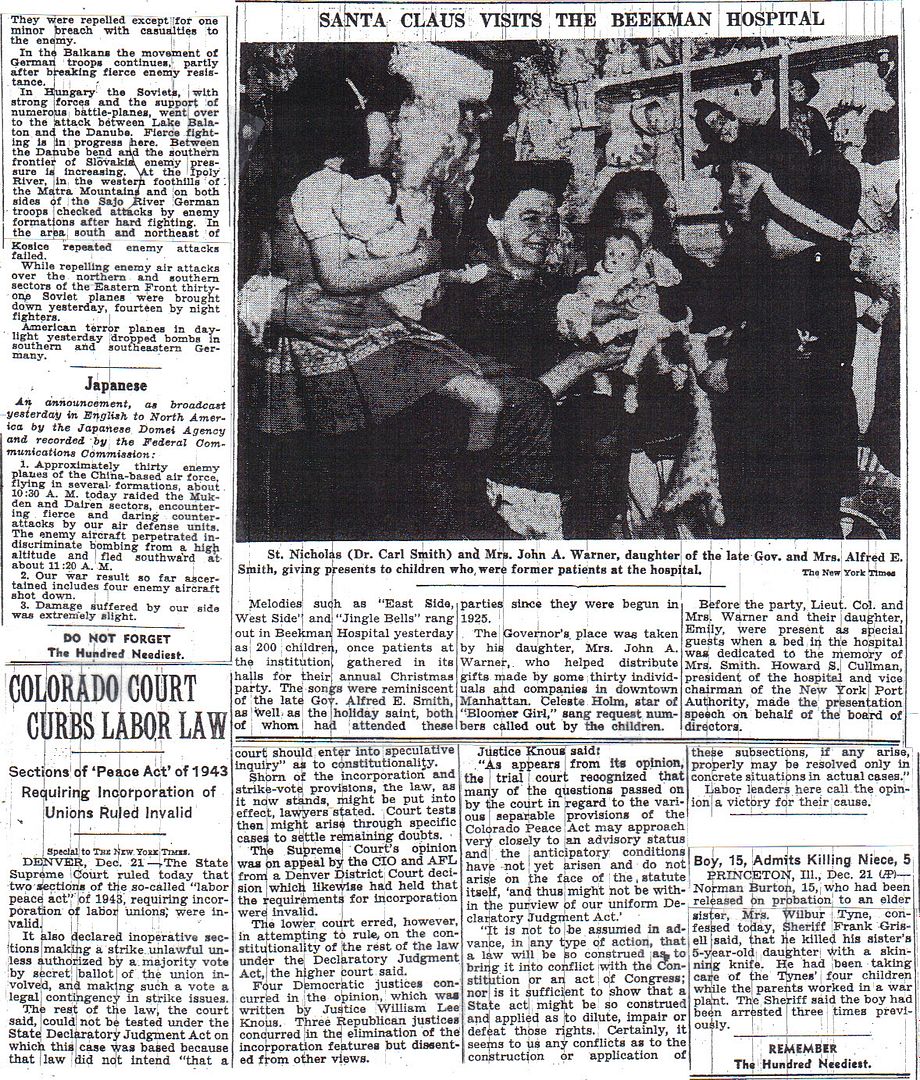
On December 22, General Heinrich von Luettwitz, commander of the German XLVIIth Armored Corps, sent a written note to General A.C. McAuliffe, commanding the 101st Airborne, demanding surrender of Bastogne. He received a one-word answer which became famous: “NUTS!”
William L. Shirer, The Rise and Fall of the Third Reich

Major General H.W. Blakeley, USA, Ret., 32d Infantry Division in World War II
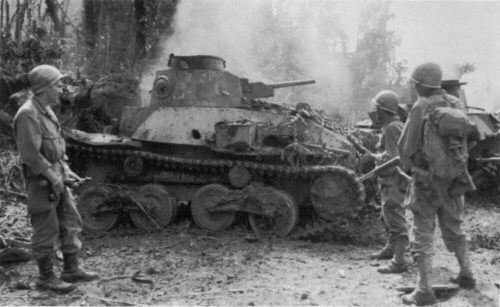
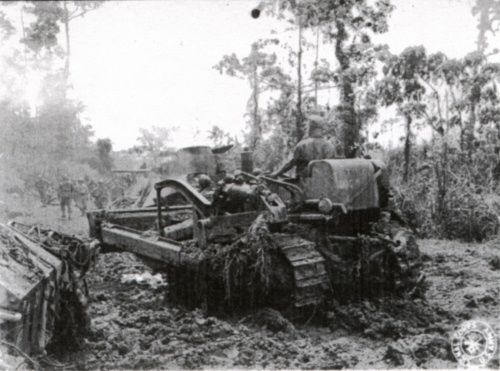
Now that the Ormoc Valley was secured, the majority of the remaining Japanese forces on Leyte had been forced into the northwest corner of the island. Sixth Army's next objective was to eliminate those enemy units and prevent their escape for future use elsewhere. Four U.S. divisions would now turn 90 degrees and push west off Highway 2 to the sea to finalize the capture of Leyte. The southernmost unit, the 77TH Division, would advance to seize Palompon, the last main port available to the Japanese. To the right (north) of the 77TH Division would be the 1ST Cavalry Division, then the 32D Division, and then the 24TH Division.
“The northwestern mountains of Leyte west of Ormoc Bay provided a difficult barrier to any movement toward the northwest coast. The area was the last one available to the Japanese either for escaping from Leyte or for staging defensive actions. In general, the terrain was rough, increasing in altitude from broken ground and low hills in the north to steep rocky ridges and high hills in the south. The northern part was either under cultivation or covered with cogon grass. Toward the south, the cultivated fields and grasslands were gradually supplanted by dense forests.” (Cannon 347)
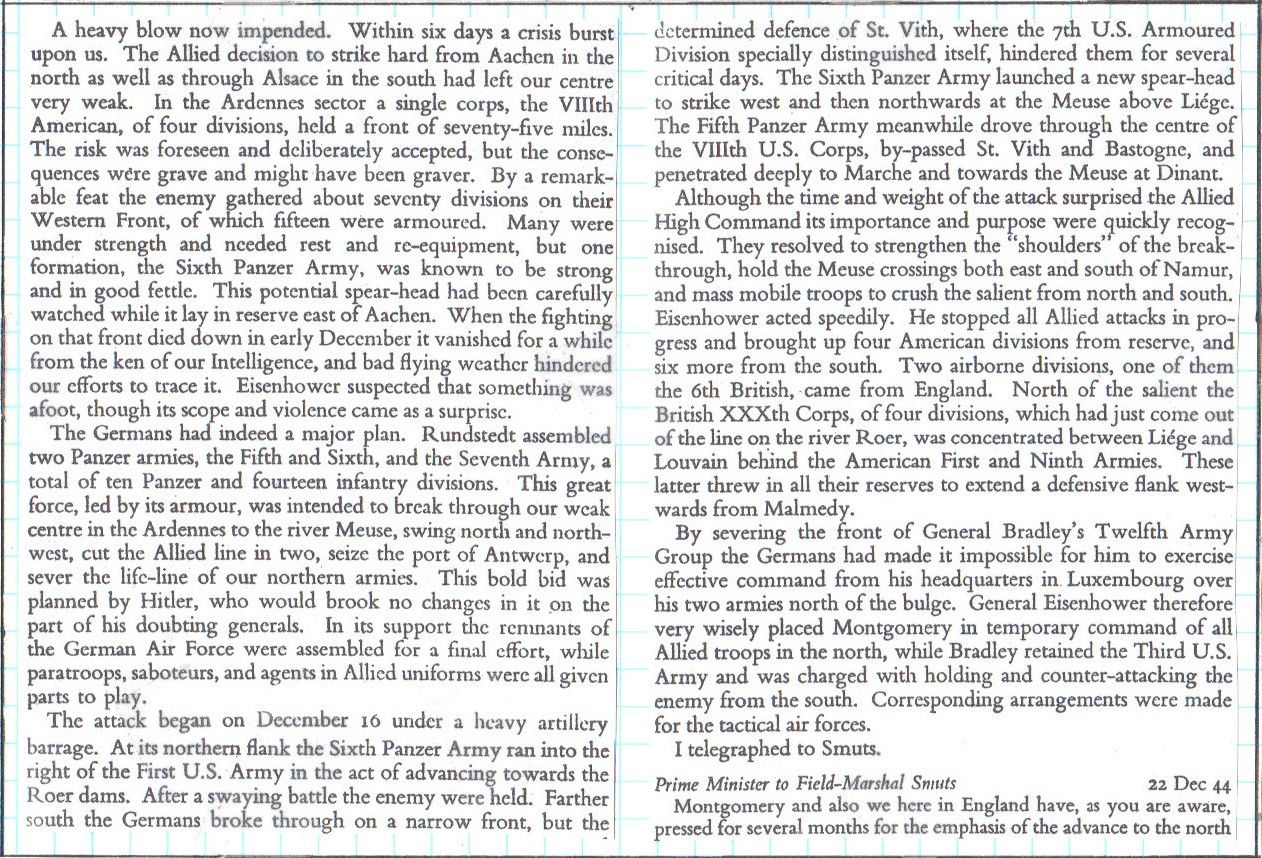
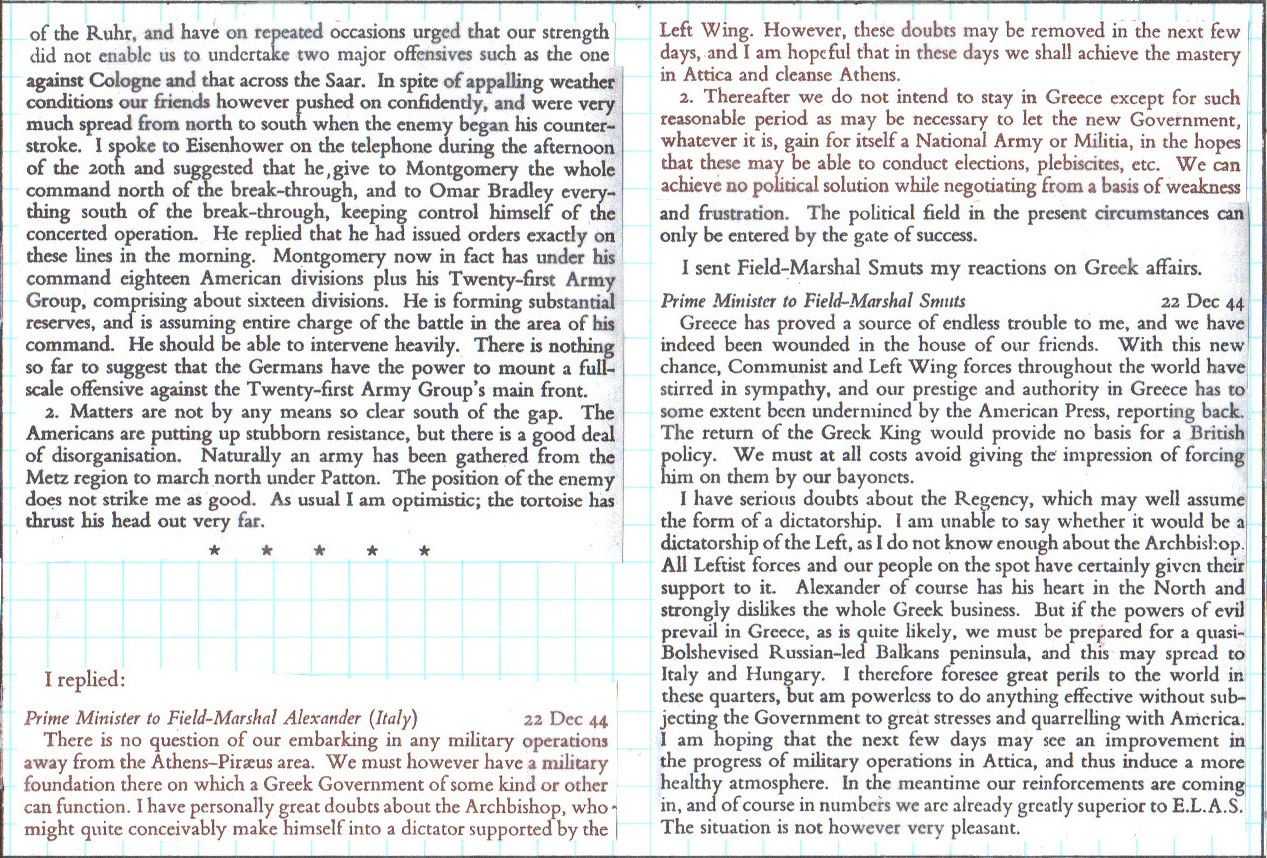
Winston S. Churchill, Triumph and Tragedy
http://www.etherit.co.uk/month/11/22.htm
December 22nd, 1944 (FRIDAY)
UNITED KINGDOM:
Three USAAF Ninth Air Force fighter groups (nine squadrons) of the IX Tactical Air Command are transferred to the XIX Tactical Air Command to concentrate air power for cooperation with the U.S. Third Army to which the main effort against the Bulge has been assigned; the groups return to control of the IX Tactical Air Command on 25 December. Fighters fly a few strafing, weather reconnaissance, intruder patrol, and alert missions; bad weather cancels all other missions.
Destroyer HMS Zenith commissioned.
BELGIUM: A German demand for surrender is delivered to the US 101st Airborne at Bastogne. General McAuliffe is reported to have said “Nuts!”.
St. Vith is evacuated by the Allies and falls to the German offensive, behind schedule.
Rundstedt, Model and Guderian recommend that the offensive be halted. This is due to Allied resistance, the arrival of reserve units, and the clearing weather.
Another factor which greatly worried Generaloberst Guderian [as Chef des Generalstabes], was the precarious situation in the _tenatively_ dormant northern sector of the Eastern front, which [excluding Kurland] ran roughly from the Baltic in East Prussia following the Weichsel [Vistula] south over the Carpathians into the SE theater, where the Soviets were in the process of encircling Budapest, and because of Romania and Bulgaria’s defection from the Axis camp earlier in the year, were making deep strides into the Balkans. Guderian, through Gen.Maj. Reinhard Gehlen, Chief of the OKH intelligence section known as ‘Fremde Heere Ost’ [Foreign Armies East] , expected the Russian winter offensive to commence at any moment from the deep Soviet bridegheads over the Weichsel at Magnusew, Sandomierz, and the largest, at Baranow, south of Warsaw, all captured and exploited by the Red Army in the fierce rearguard fighting of fall 1944. Earlier in December, the fighting in the southeast prompted Hitler to take Guderian’s most potent mobile reserve from around Warsaw, the IV.SS-Panzerkorps, which included the top-rate 5.SS ‘Wiking’ and 3.SS-’Totenkopf’ Panzer divisions, and send them south to the Budapest salient. Despite a feeble attempt at creating a defensive line ‘in depth’ across Poland and into the eastern apporoaches of the Reich by creating a number of interlocking ‘Festungsta(e)dte’ or ‘Fortress Cities’, with which to anchor a defensive withdrawl, the actuality of the situation at this point in the East was bluntly surmised by Guderian in a conference at the FHQ just before the Ardennes offensive where he told Hitler that:, “The Eastern Front is like a House of Cards, one push, and it will collapse.” Hitler said that they had faced serious setbacks in the East before, and that they had always survived them, pronouncing, “the East will have to take care of itself, as in the past.” [The blow actually came on January 12, 1945, and there was indeed very little between the Vistuala and the Oder with which to stop the advance of the Red Army. By the end of February 1945 they would be on the Oder, at the gates of the Reichshauptstadt - Berlin.]
See Tony LeTissier’s new book: ZHUKOV ON THE ODER, available through Frank Cass Publ.
Russ Folsom
Trapped here in a network of road links are several thousand lightly-armed men of the 28th Infantry and 10th and 101st US Airborne Divisions. The Germans with one infantry and two Panzer divisions around the town, this morning sent a courier with a message calling on the Americans to surrender. Brig-Gen Anthony C McAuliffe took the paper and scrawled: “To the German commander: NUTS! The American Commander.”
Despite McAuliffe’s relaxed defiance the American position remains precarious, both here and elsewhere. A Panzer force passing north of Bastogne is headed for Ourtheville and Celle, within striking distance of Dinant and Namur. Further north the Americans, having lost 8,000 of some 22,000 men at St. Vith are pulling back.
Three days ago in his headquarters at Versailles, Eisenhower met his field commanders, Bradley, Patton and Devers, of the US 6th Army Group in Lorraine. He told them he expected only cheerful faces - and then gave them the bad news. Part of Bradley’s 12th Army Group, cut off north of the Ardennes bulge, is being transferred to Montgomery’s command. Bradley took it badly, especially when told of Monty’s swaggering into a US operational HQ and refusing a lunch invitation.
The tide of battle may be about to shift though. The German thrusts have repeatedly been stalled by fuel shortages and pockets of American resistance. Better still the days of sleet and low cloud, which have protected the Germans from Allied air power, are about to end, according to the forecasters.
Meanwhile, Patton’s Third Army is on the move. Eisenhower did not believe Patton when he promised that he would be at Bastogne by today; he had to disengage his men from battle on the Saar front, execute a 90 degree change of course and move over 130,000 vehicles 75 miles to the north. And he has done just that.
General der Infanterie Heinz Kokott, Commanding General 26 Volks Grenadier Division:
“The elements of the division surrounding Bastogne in a wide arc - from Recogne to almost Mande-St. Etienne - could be supplied only with difficulty. This not only because the units were widely separated from each other but especially due to the fact that, owing to enemy air activity, supply movements had to be confined to the hours of darkness and nighttime. Movements by the horse-drawn supply columns, the regimental columns and the supply platoons of the battalions were carried out with untiring efforts, and the loading space of the motorized columns was utilized to thee limit of its capacity. (Jay Stone)
7th U.S. Army had repositioned to cover ground formerly held by Patton’s 35d Army. Germans realized that this was a serious weakness in the U.S. force.
Plans for “Operation Nordwind” were finalized with massing of the “lost German Divisions” (that Allied intelligence could not account for) along the Rhine for an assault against U.S. 7th Army in Alsace-Lorraine. Hitler wanted to drive to Paris. German generals were more realistic and wanted to recapture Strasburg, now held by the Free French First Army.
[Strasburg was considered politically critical by both the French and the Germans since they had been fighting over it for 100 years.]
To the dismay of German General Staff, Heinrich Himmler was given command of the Army of the Upper Rhine. (Joe Brott)
FRANCE: The Canadians reportedly capture Tilly before dawn, but they only control half the village, and the German panzers counter-attack, destroying most Canadian tanks and cutting off the North Nova Scotia Highlanders.
In the U.S. Third Army’s XII Corps area, the 35th Infantry Division moves from Puttelange to Metz. The 2d Cavalry Group (Mechanized) assembles near Vatimont.
LUXEMBOURG: In the U.S. Third Army’s III Corps area, the 26th Infantry Division, to the right of the corps, marches about 16 miles (26 kilometers) before making contact with the Germans in the Rambrouch-Grosbous area. After a 5-mile (8 kilometer) advance, the 80th Infantry Division runs into stiff resistance at Merzig and Ettelbruck but clears most of Merzig. In XX Corps area, the 90th Infantry Division completes a withdrawal of the Dillingen bridgehead.
GERMANY:
In the U.S. Ninth Army’s XIX Corps area, the 5th Armored Division clears Untermaubach and Schneidhausen before being relieved in the line by the 8th and 83d Infantry Divisions. The 8th Infantry Division attack on Obermaubach fails.
During the night of 22/23 December, RAF Bomber Command flies two missions: in the first mission, 166 Lancasters and two Mosquitos, but with some Pathfinders, are sent to bomb the Mosel marshalling yard (M/Y) at Koblenz; 162 aircraft bomb the target without loss. The aiming point is the Mosel railway yards. There is some cloud in the target area and the local report says that the main weight of the attack falls in the farming areas between 2 and 4 kilometers (1.2 and 2.5 miles) to the west where the villages of Güls and Rübenach are badly hit. But the fringes of the bombing falls on the railway yards, several main lines and two important road bridges. In the second mission, 106 aircraft, 90 Halifaxes, 14 Lancasters and two Mosquitos, are dispatched to bomb the Bingerbruck M/Y at Bingen; two Halifaxes and a Lancaster are lost. The attack is extremely accurate and all bombs fall into the yards or into the nearby Rhine River, where two barges are sunk. All movement of supp lies by rail through Bingen to the Ardennes battle front cease.
U-2358, U-3028 launched
U-3517 commissioned.
HUNGARY: A provisional Hungarian government, under Soviet protection, is formed at Debrecen.
ITALY: Clearing weather during the day enables USAAF Twelfth Air Force medium bombers to hit bridges at Torre Beretti, Pontetidone, and Chiari; fighter-bombers concentrate on railway targets, destroying five bridges in northern Italy and making numerous cuts in rail lines, several on the important Brenner Pass line. Motor transport and guns north of the battle area are also successfully attacked. During the night of 22/23 December, A-20 Havocs on intruder patrols hit Po River crossings and targets of opportunity.
YUGOSLAVIA: Eleven RAF bombers of No. 205 (Heavy Bomber) Group fly supplies to partisans.
SWEDEN: A secret OSS report originating in Stockholm stated that U-boats armed with V-1s would shortly sail on a patrol against New York; this was the fourth such report in 8 weeks.
BURMA: In the Northern Combat Area Command area, the 29th Brigade, British 36th Division, moving down the Irrawaddy River, gets patrols to Tigyaing, from which the Japanese have withdrawn. From Tigyaing the brigade is to cross the river for a drive on Mongmit while the rest of the division closes in on Mongmit from the north.
Twelve USAAF Tenth Air Force B-25 Mitchells bomb a supply area at Magyidon; eight P-47 Thunderbolts knock out the Namhkai bypass bridge and damage two bridges at Kinu and 16 hit targets of opportunity along the Irrawaddy River from Tagaung to Thabeikkyin and along the road east and north to Mongmit and 12 P-47 Thunderbolts bomb and strafe a personnel area at Onbauk and bridge at Na-lang.
USAAF Fourteenth Air Force aircraft strafe Heho Airfield and targets of opportunity at Wanling.
CHINA: Two USAAF Fourteenth Air Force B-25 Mitchells bomb Yungning. Over 80 P-51 Mustangs and P-40s on armed reconnaissance over wide reaches of southern China, eastern Burma, and northern French Indochina hit numerous targets of opportunity. The Tien Ho Airfield in Canton is strafed and several aircraft are destroyed in battles over Canton and Kai Tek Airfield in Hong Kong. Rail facilities, river and road traffic, and other targets of opportunity are hit at Chinchengehiang and the Pingsiang-Yungning area.
JAPAN: The USAAF Twentieth Air Force’s XXI Bomber Command flies Mission 14: 78 B-29 Superfortresses from the Mariana Islands are dispatched to hit the Mitsubishi aircraft industrial complex in Nagoya; 48 hit the primary target and 14 hit alternate targets. Total cloud cover prevents accuracy, and damage is light. B-29 gunners claim 9-17-15 Japanese aircraft; three B-29s are lost.
FRENCH INDOCHINA: Four USAAF Fourteenth Air Force B-25 Mitchells damage a bridge at Song Hoa. Rail facilities, river and road traffic, and other targets of opportunity are hit by fighter-bombers at Gia Lam.
COMMONWEALTH OF THE PHILIPPINES: In the U.S. Sixth Army’s X Corps area on Leyte Island, the 127th Infantry Regiment, 32d Infantry Division reaches Lonoy. The 1st Battalion, 34th Infantry Regiment, 24th Infantry Division, aided by a mortar platoon brought forward by sea, clears Tuktuk. In the XXIV Corps area, the 2d and 3d Battalions, 305th Infantry Regiment, 77th Infantry Division, start west from Valencia toward the coast at Palompon, passing through the 1st Battalion, the 306th Infantry Regiment at the Togbong River and continuing across the Pagsangahan River toward Matagob. Engineers follow closely to work on the bridges.
On Luzon, USAAF Far East Air Forces (FEAF) B-24 Liberators, with P-47 Thunderbolt support, bomb Clark Field while P-47 Thunderbolts bomb and strafe Lipa Airfield. On Negros Island, B-24s bomb Carolina Airfield while B-25 Mitchells, with P-47 cover, hit Fabrica Aerodrome. On Mindanao Island, B-24s bomb storage and personnel areas while B-25s hit the waterfront at Zamboanga. FEAF aircraft fly numerous shipping searches, armed reconnaissance, and sweeps over Mindanao and throughout the Netherlands East Indies.
EAST INDIES: In the Moluccas Islands of the Netherlands East Indies, numerous fighter-bombers pound the Wasile Bay and Goeroea areas on Galela Island and Hate Tabako Aerodrome on Halmahera Island. USAAF and Australian B-24 Liberators, B-25 Mitchells, and fighter-bombers bomb Lolobato and Hate Tabako Aerodromes on Halmahera Island and the Goeroea area. The Australian First Tactical Air Force beings a four-day blitz on Japanese installations. A total of 384 Kittyhawk and 129 Beaufighter sorties are made in the four days.
NEW GUINEA: The 14th Antiaircraft Artillery Group arrive. (Jean Beach)
VOLCANO ISLANDS: During the night of 22/23 December, two USAAF Seventh Air Force B-24 Liberators based in the Mariana Islands make harassing strikes on Iwo Jima.
U.S.A.: Washington: Henry Arnold is promoted to the rank of General of the Army.
Commissioning of first 2 African-American WAVES officers, Harriet Ida Pickens and Frances F. Wills.
Light cruiser USS Oklahoma City commissioned.
Destroyer USS Southerland commissioned.
Destroyer escort USS Sutton commissioned.
The money line from Churchill to Smuts:
“As usual I am optimistic; the tortoise has thrust his head out very far.”
That boy truly had a way with words - and a good deal of foresight as well.
His comments to Smuts about the situation in Greece are also very prescient. He mentions that the American press is on the wrong side ...
The mentioned “King of Greece” was the father of Prince Philip, who will marry Crown Princess Elizabeth in a few years.

Wow, that gives me chills! It’s like seeing the maps with Gen. Jodl’s hand-drawn troop movement orders.
It would be nice to know (a) if it's an authentic copy and (b) how it survived to be thus scanned (looks like it went into someone's shirt-pocket--that's how I fold papers I pocket). It would also be great to see the corresponding paper copy of Gen. McAuliffe's famous reply.
The HQ was probably a bit chaotic at the time. Maybe it did get folded and put in a pocket, and later filed.
Interesting that all Hitler's senior commanders are now recommending discontinuing the offensive. Henkster was right that this thing was doomed when the northern shoulder was jammed at Elsenborn and the southern shoulder jammed by Patton. The stubborn resistance at St. Vith and Bastogne and a number of other places has completely derailed the schedule. And not finding any gas, of course.
Not that Gille’s IV SS Panzer Corps would have made that much of a difference in Poland this January. However, if Hitler had kept IV SS Panzer Corps there, and added 6 Panzer Army and some of the tanks allocated to 5th Panzer Army, and called von Manstein out of retirement and allowed him to conduct a mobile defense, and used all of his Me262s as air support, and told Heisenberg that graphite would be an effective reactor moderator if he removed all the Boron from it.....
Oh hell...off my meds again.
From Atkinson’s The Guns at Last Light
A GI shivering in an Ardennes foxhole asked, after his first glimpse of a German Me-262 jet streaking overhead, “How come we don’t ever have any secret weapon?” Yet thousands of enemy troops now sensed what many American soldiers still did not know: that a secret weapon no bigger than a radio tube was being used in ground combat for the first time across the Bulge, enhancing the killing power of U.S. Artillery with what one enthusiast would call “the most remarkable scientific achievement of the war” except for the atomic bomb.
The new weapon’s origin dated to 1940, with a recognition that on average 2,500 antiaircraft artillery shells would be needed to bring down a single enemy plane. Both field artillery antiaircraft rounds exploded either on contact or when a fuze detonated the shell after a preset flight time; neither technique offered killing precision. Scientists and engineers instead sought a fuze that could sense proximity to the target, causing a shell to blow up not when it randomly reached an altitude of ten or fifteen thousand feet, but rather when it detected an airplane within the kill radius of exploding fragments. Such a fuze would have to withstand the stupendous strain of cannonading, including a g-force of twenty thousand upon leaving a gun muzzle and the centrifugal forces of a shell spinning at five hundred rotations per second. It would also have to be simple enough the build by the millions on an assemble line, and sufficiently miniaturized to squeeze into a shell nose roughly the size of an ice cream cone.
The resulting device, eventually known by the code designations “VT” or “T-98,” and by the code name “pozit,” contained a tiny radio transmitter, which broadcast a signal in flight. When the beam bounced off a solid object, a receiver in the fuze detected the reflected signal and tripped a firing circuit that detonated the shell. A 5-inch pozit shell, fired by the USS Helena in the South Pacific, had for the first time brought down a Japanese plane in January 1943. But for eighteen months the fuze could be used only over water or friendly territory, for fear that if the enemy retrieved a dud, Axis engineers could copy the design. Pozit shells were secretly used against V-1s aimed at London-British officials considered them up to five times more effective than time-fuzed rounds-and to defend Cherbourg harbor and the Mulberries off Normandy. More recently, British Lancaster bombers had flown and emergency consignment of pozit fuzes from a Cincinnati plant to Antwerp for use against German flying bombs.
Pozit variants had been developed for the field artillery, using radio signals bounced off the approaching ground to detonate shells fifty or seventy-five feet up. Experiments in North Carolina showed that regardless of terrain, weather, or darkness, even entrenched targets were highly vulnerable to a lethal spray of steel shards from such airbursts. One senior Army general called it “the most important new development in the ammunition field since the introduction of high explosive projectiles.”
With approval from the Charlie-charlies, SHAEF in lat fall fixed Christmas as the day gunners in Europe could open fire with pozit shells. More than a thousand commanders and staff officers were briefed on the secret, with firing demonstrations in six Allied armies. Hitler hastened the day: when HERBSTNEBEL began. Eisenhower moved up the release by a week. A gunner in the 99th Division described “piles of shells with many men using wrenches and hammers to bang off the one [fuze] and install the other.” Withing days of the first use by field artillerymen, reports described “the slaughter of enemy concentrations east of Bastogne and interdictions of the principle enemy supply routes west of St. Vith. “Twelfth Army Group cheerfully reported that the pozit fuze “is a terror weapon.” SHAEF concluded the “the enemy has been severely upset.
Three hundred American companies would soon mass produce nearly two million fuzes a month at $20 each. “The new shell with the funny fuze is devastating,” Patton wrote the Army ordnance chief in late December. “The other night we caught a German battalion, which was trying to cross the Sauer River, with a battalion concentration and killed by actual count 702.” Such exaggerations-and Patton’s tally’s often proved inflated-were common, and many unsubstantiated claims of pozit lethality would emerge from the Bulge. In the event, fewer than 200,000 pozit rounds were fired by 12th Army Group in the Battle of the Bulge: a modest fraction of the total, although it did include one-quarter of the Army’s heaviest shells. Nor was the new technology flawless. Tall trees, chimneys, steeples and straying spotter planes could cause premature detonations.
Yet the pozit would prove as demoralizing to German troops as it was heartening to GIs. Some enemy officers called it the “electro shell” or “magnetic igniter,” believing that terrestrial magnetism triggered the fuze. “It hangs in the air until it finds just the right place to explode,” one captured soldier insisted. Shell fragments were said to slice through thick logs atop enemy bunkers, and a single 155mm airburst reportedly could shred every square foot within a seventy five-yard diameter. Such mayhem was “pure manslaughter,” another German prisoner complained. “The devil himself could not escape.”
Nice piece of history. Guns at Last Light is on the nightstand, next up on the reading list. Looking forward to it.
Disclaimer: Opinions posted on Free Republic are those of the individual posters and do not necessarily represent the opinion of Free Republic or its management. All materials posted herein are protected by copyright law and the exemption for fair use of copyrighted works.